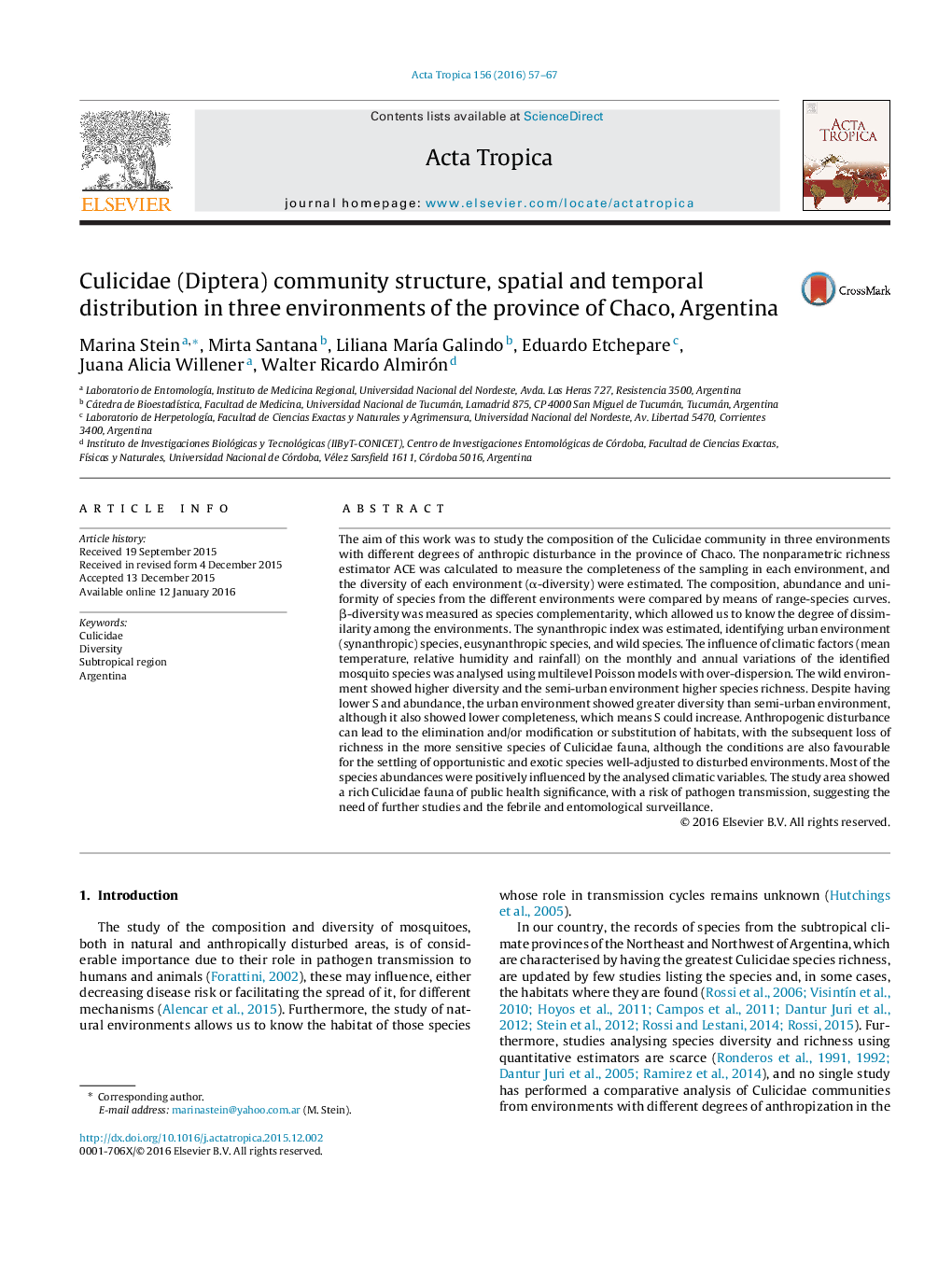| Article ID | Journal | Published Year | Pages | File Type |
|---|---|---|---|---|
| 3393746 | Acta Tropica | 2016 | 11 Pages |
•Culicidae community in three different environments was studied.•The completeness of the sampling, richness and diversity were estimated.•The composition, abundance and uniformity of species were compared.•The influence of climatic factors on variations of species was analyzed.
The aim of this work was to study the composition of the Culicidae community in three environments with different degrees of anthropic disturbance in the province of Chaco. The nonparametric richness estimator ACE was calculated to measure the completeness of the sampling in each environment, and the diversity of each environment (α-diversity) were estimated. The composition, abundance and uniformity of species from the different environments were compared by means of range-species curves. β-diversity was measured as species complementarity, which allowed us to know the degree of dissimilarity among the environments. The synanthropic index was estimated, identifying urban environment (synanthropic) species, eusynanthropic species, and wild species. The influence of climatic factors (mean temperature, relative humidity and rainfall) on the monthly and annual variations of the identified mosquito species was analysed using multilevel Poisson models with over-dispersion. The wild environment showed higher diversity and the semi-urban environment higher species richness. Despite having lower S and abundance, the urban environment showed greater diversity than semi-urban environment, although it also showed lower completeness, which means S could increase. Anthropogenic disturbance can lead to the elimination and/or modification or substitution of habitats, with the subsequent loss of richness in the more sensitive species of Culicidae fauna, although the conditions are also favourable for the settling of opportunistic and exotic species well-adjusted to disturbed environments. Most of the species abundances were positively influenced by the analysed climatic variables. The study area showed a rich Culicidae fauna of public health significance, with a risk of pathogen transmission, suggesting the need of further studies and the febrile and entomological surveillance.
Graphical abstractThe most conserved environments showed greater richness and abundance of mosquito species, some of them are absent in the urban environment, being susceptible to anthropogenic changes.Figure optionsDownload full-size imageDownload as PowerPoint slide
